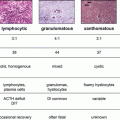© Springer Science+Business Media New York 2015
Terry F. Davies (ed.)A Case-Based Guide to Clinical Endocrinology10.1007/978-1-4939-2059-4_3232. Misdiagnosis of Atypical Femur Fractures
(1)
Mount Sinai Bone Program, Mount Sinai School of Medicine, New York, NY 10029, USA
Keywords
Atypical femur fracturesX-rayOpen reductionIntramedullary roddingAnemiaPercocetIntranasal steroidsHormone replacement therapyPremproCrestorWilson’s diseaseObjective
1.
Recognize a true atypical fracture of the femur.
2.
Evaluate critically the literature that links long-term bisphosphonate usage to the risk of atypical fracture.
Case Presentation
A 60-year-old Caucasian female was brought to the Emergency Room with a fracture of the right femur and severe leg pain. Per first responder reports, the patient fell in her patio, but she was unclear of the precise circumstances relating to the fall. Until the day of the fracture, the patient was in her usual state of good health. X-ray on the day of admission reported fracture of the proximal femoral diaphysis, with comminution. Her vitals were normal on admission. The patient was admitted for surgical repair by open reduction and intramedullary rodding. Her postoperative course was complicated with anemia due to blood loss. Acute physical and occupational rehabilitation enhanced her capacity to ambulate. While her pain improved, she continued to complain of leg spasms for which she received Percocet. Discharged with a wheelchair and walker, the patient underwent 6 further months of strength training. Repeat X-rays showed good alignment of the fragments.
Prior to this injury, she was an avid runner. She had no fractures in the past, was not diabetic, and used intranasal steroids for her allergies. There was no history of kidney stones. She became perimenopausal 10 years prior to her fracture. For ~3 years, she was on hormone replacement therapy (Prempro 0.625 mg/2.5 mg). Other medical history included diffuse degenerative disc disease and hypercholesterolemia for which she was on crestor (10 mg qd). She had a 30-pack-year history of smoking, but had stopped 5 years ago. Her mother and older sister both suffered from vertebral compression fractures.
The patient underwent a bone density (DXA) scan at age 52 at the recommendation of her primary care physician. Her T-scores were: −0.6 in the lumbar spine AP view; −2.2 in the lumbar spine lateral view; −1.9 at the femoral neck; and −1.3 at the total hip. In view of her osteopenia and the high risk of developing osteoporosis because of her maternal history and smoking history, the patient was started on alendronate (10 mg qd) by her primary care physician. Therapy was continued over the following 8 years. A repeat DXA measurement 4 years later showed the following T-scores: +0.5 at the lumbar spine AP view, −1.8 at the lumbar spine lateral view, −1.7 at the femoral neck; and −1.3 at the total hip. Her alendronate was stopped following her fracture, which was suggested as being “atypical” and caused as a result of long-term alendronate therapy (see below).
Blood chemistries were unremarkable, except for notable abnormalities in serum calcium and PTH. Her serum calcium levels were noted as high or high–normal on several occasions, notably 10.5 mg/dL, 10.3 mg/dL, 10.8 mg/dL, 10 mg/dL, 10.7 mg/dL (around the time of her fracture), 10.8 mg/dL, 10.6 mg/dL, and 10.5 mg/dL. Phosphorous levels were in the low to low–normal range. Corresponding to a calcium of 10.7 mg/dL, her PTH was 40 pg/mL. While in the normal range (12–68 pg/mL), this represents inappropriate elevation with respect to serum calcium. A repeat blood level 5 days later again showed an inappropriately elevated PTH (33 pg/mL) versus her serum calcium (10.5 mg/dL). Her serum ionized calcium was high at 6.0 mg/dL (4.5–5.4 mg/dL) with high urine calcium of 269 mg/day (<250 mg/day). These findings are consistent with primary hyperparathyroidism. Vitamin D levels remained largely normal.
How the Diagnosis Was Made
The question is whether the patient had an atypical fracture. Atypical femur fractures (AFFs) are a rare type of low trauma femur fracture occurring below the greater trochanter. Between 2007 and 2008, three case series described femur fractures that displayed features that were inconsistent with typical osteoporosis-related fractures. A proportion of the patients reported in these studies had been on alendronate therapy for periods close to or over 5 years. The authors suggested that “long-term” alendronate use may in fact be the culprit underlying these unusual insufficiency fractures, although none of these case series could prove anything more than temporal association, much less cause and effect.
The phenotypic features of these fractures included cortical thickening in the lateral aspect of the subtrochanteric region; transverse fracture; medial cortical spiking; bilateral findings of stress reactions or fractures; and prodromal pain. These features ultimately became the basis of a formal definition enacted by the American Society for Bone and Mineral Research (ASBMR) Task Force in 2010 [1]. The Task Force stated that, in order for a fracture to be designated as “atypical,” it must include all the following radiographic features classified as major criteria: Notably the fracture must be:
1.




Located in the subtrochanteric or femoral shaft region of the femur
Stay updated, free articles. Join our Telegram channel

Full access? Get Clinical Tree




